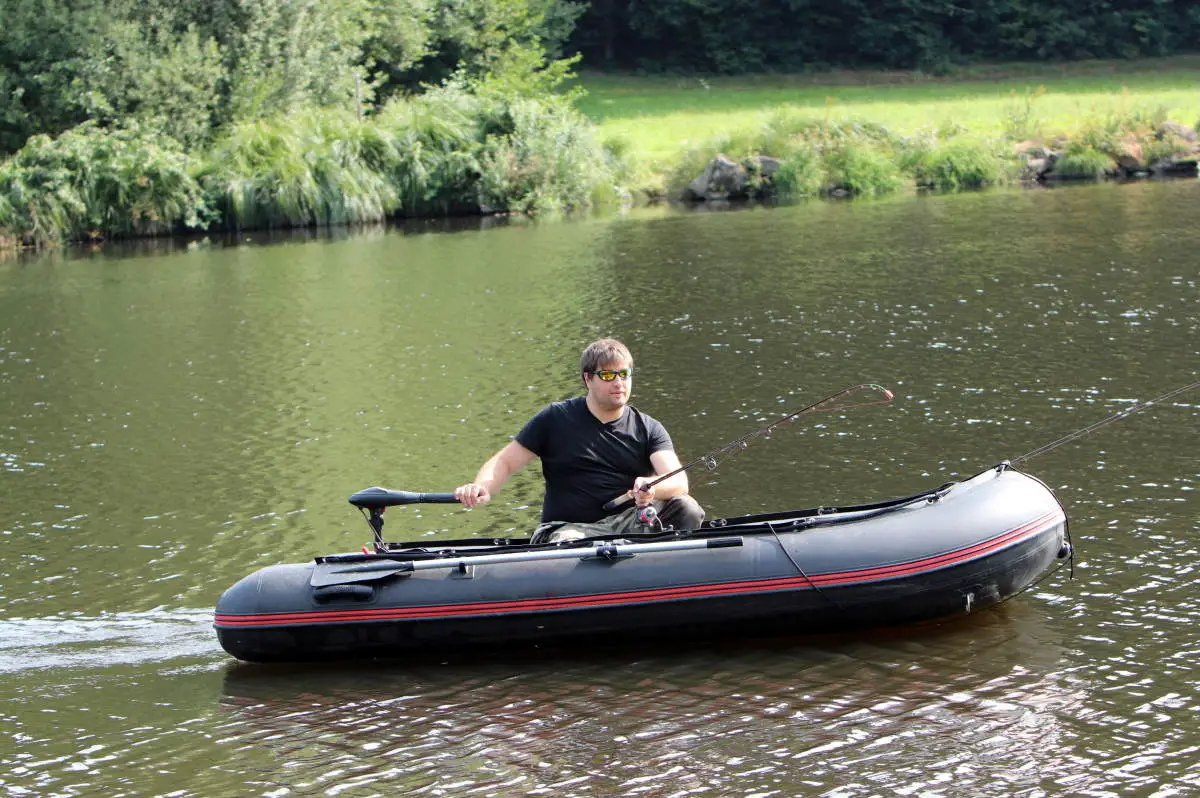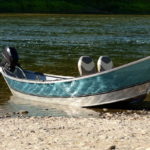Trolling motors, like many other complex electrical equipment, can face technical issues. However, this doesn’t mean you should discard the entire unit and forget about taking any more fishing trips for a while. Fortunately, most electric trolling motor problems are easy to fix on your own, even without mechanical know-how.
The top six reasons why your electric troller motor is not working include battery failure, loose wires, an issue with the circuit breaker, or faulty wire connections. The problem could also be due to a broken rotary switch or a fault in the propeller. Luckily, most of these can be fixed at home.
This article will explore some common problems when using electric trolling motors and their likely causes. We will also discuss and provide the most viable solutions to fix such issues.
Battery Failure
Batteries power electric trolling motors. Most of these motors use 12-volt deep cycle marine batteries, which come built to deplete and recharge related to trolling motors. AGM batteries (absorbed glass mat) last longer, but they are pricier; hence they are not widely used.
If your battery fails to provide power to the electric trolling motor, then the trolling motor won’t work. First, to fix this problem, check whether the battery has ample capacity to supply the motor with the power required to provide thrust.
Checking the voltage lets you know whether you need to recharge the battery. If the charge is low, recharge the battery, then check the voltage once more. However, if it’s a case of total battery failure, you might need to replace the battery completely.
Keep in mind that corroded battery connections could also cause your motor not to function. Clean the battery terminals and posts thoroughly and regularly to fix this issue.
Your batteries might also fail to work due to the following probable reasons:
- Poor battery charging
- Connecting the wire to the incorrect battery terminal
- The main battery cables could be loose, or the wiring connections corroded
- Not conducting regular checks on the battery electrolyte levels
- Using the wrong battery charger—go for a 3-stage marine battery charger
To prolong your battery life, avoid depleting your batteries fully, as doing so shortens their lifespan. In addition, recharging your battery once every month maintains the health of your batteries during the off-season. You might also want to consider tripping your circuit breaker manually after fishing to prevent the drain on your batteries from the electric trolling motor.
Bad Connection
Faulty wiring connections can quickly degrade your electric trolling motor. If not handled quickly and effectively, they can cause permanent circuit damage. Using the wrong-sized wire to connect your trolling motor to the batteries can also lead to problems, as the wire could heat up, causing the motor to shut down.
Ensure to use marine-grade wires bearing the recommended size and length to connect the electric trolling motor with the battery. You could also try and move the batteries a little closer to the motor. This will reduce the distance the wire runs and the chances of accidental damage.
Corrosion is another concern for wire connections. Check terminals for rust or white powder, and don’t forget to look inside the open end of the wire. Placing a few dabs of dielectric grease on the connections before heat shrinking or on terminals will reduce corrosion.
Also, check to confirm that the wiring is done correctly. If you see something is out of place, rearrange the wiring connections accordingly.
An Issue With the Circuit Breaker
The circuit breaker works to protect your electrical trolling motor when the propeller jams, get tangled in weeds, or stuck on rocks. Without a circuit breaker, the trolling motor would require additional power to turn the jammed propellor and eventually burn up, causing damage.
A circuit breaker severs the circuit when the amperage reaches a certain point. This cuts the power going to the motor and prevents burnout. For maximum protection, make sure to use a circuit breaker rated 60-amp, unless the manufacturer calls for a different size.
Also, check that the fuse in the wiring between your trolling motor and the batteries is working correctly. If any switches or fuses are blown, replace them immediately. Finally, the problem could also be due to a tripped circuit breaker. Luckily, this is easy to fix. Push it back into position, and your electric trolling motor should run without any hitches.
A Case of Loose Wires
If the connections have loose wiring or corrosion, your electric trolling motor will not work. Check the plug as well, as it could be loose or connected incorrectly. Fix the plug either by tightening the loose connection or connecting it properly.
To prevent power loss caused by loose connections or corrosion, coat all your terminal connections with dielectric grease. Again, if for any reason you decide to run wire extensions for your electric trolling motor and battery wiring, go for a 6-gauge wire if the extension happens to be more than 6 feet (1.82 m). However, you can work with an 8-gauge wire if the extension is much shorter than this.
Broken Pin in the Rotary Switch
Confirm that the main rotary switch of your electric trolling motor is in good working condition. If not, fix it or replace it with a new unit. At times, the culprit could be a broken pin inside the rotary switch.
The good news is that this is easy to fix once you open up the rotary switch. This is primarily not an issue for bow mount trolling motors. Only stern mount trolling motors are controlled by turning the handle and having rotary switches, with a few exceptions.
Here is a video showing you how to go about repairing the switch on your electric trolling motor:
Broken Propeller Pin
The pin that drives the propeller could be bent or even broken. If this is the case, you will need to replace the pin with a new one. Check the propeller as well by using your hand to try and turn it. If the propeller has no issues, it should turn easily with just a slight hint of magnetic drag.
Note that if the propeller has a problem, it could prevent the motor from supplying enough thrust. Take out the propeller, clean it, then put it back and check whether there’s any change. If the propeller fails to work as it should, then you may want to replace it.
Check out our article Minn Kota Trolling Motor Prop Not Spinning | Top 3 Reasons Why
How To Maintain Your Electric Trolling Motor
One sure way to keep your electric trolling motor in good working order is to maintain it well. Knowing a couple of helpful electric trolling motor maintenance tips and tricks could go a long way in ensuring your equipment’s durability. It also makes the motor easy to use.
Follow the below suggestions to retain your electric trolling motor in tip-top condition.
- Always recharge the batteries after using the electric trolling motor.
- Always unplug the trolling motor before charging.
- Only use distilled water to top off your batteries.
- Lubricate all the pivot points using a non-aerosol lubricant.
- Make daily checks to ensure that the battery lead connections are tight.
- Disconnect the trolling motor from the batteries when not in use or during battery charging.
- Use marine-grade wire for your wiring connections since they are robust, flexible, and insulated to suit the marine environment.
- After using the electric trolling motor, always check behind your propeller for fishing line, weeds, or other debris that might have wrapped around it.
- Always rinse out your electric trolling motor with fresh water after using it in salty water.
- Avoid wetting the top cover since this could cause damage to the circuitry inside.
- When not using the electric trolling motor, like during freezing weather, store the motor in a location safe from the elements.
Check out our article Will an Electric Trolling Motor Overheat Out of Water?
Final Thoughts
Knowing how to fix common electric trolling motor problems can save you both time and money since you won’t have to keep taking your motor for repairs. A basic understanding of the main parts of your trolling motor can prove quite helpful here.
However, if unsure about anything, seek professional help to avoid damaging your equipment.




